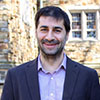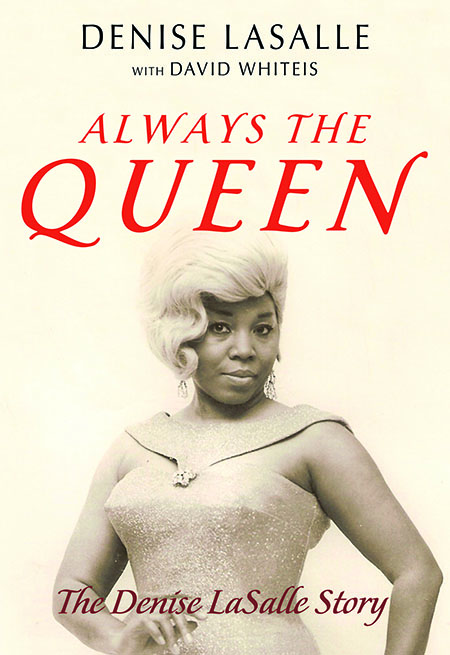The Challenge of Antiracism
Historian Ibram X. Kendi confronts our racist culture — and looks inward
Ibram X. Kendi climbed a peak, and then he questioned himself. With the 2016 publication of Stamped from the Beginning, an epic examination of racism and American intellectual history, the precise and soft-spoken college professor emerged as a significant public figure. Arguing that racist ideas have historically arisen to justify racist policies, his work illuminated contemporary debates about race and inequality. At age 34, he became the youngest winner of the National Book Award for Nonfiction.

Yet as Kendi toured the country to discuss Stamped, his readers pushed him to examine himself. As he recalls, they kept asking: “What are you doing to change policy?” Kendi’s new book, How to Be an Antiracist, serves as his answer.
Relatively brief and absolutely absorbing, the book blends a history lesson on racist ideas, a constructive guide to antiracism, and a compelling memoir about his own intellectual evolution. Kendi paints antiracism as an ongoing process — one that demands introspection but is rooted in concrete activism and discourse. He sketches out how racist ideas have reinforced the practices of wealthy oppressors, from “Prince Henry to President Trump,” and identifies various racist policies in today’s United States, including laws that promote mass incarceration, voter disenfranchisement, and unequal distribution of resources to schools and neighborhoods.
Given such inequities, as Kendi sees it, professing to be “not racist” amounts to making a claim on nonexistent territory. It is seeking a false neutrality, which allows ideas to persist about the superiority of one racial group over another. He writes: “One either allows racial inequalities to persevere, as a racist, or confronts racial inequalities, as an antiracist.”
Antiracism is a conscious choice that requires thoughtfulness and discipline. It means taking cultures on their own terms: One person’s Mozart is another’s Wu-Tang Clan. It also means judging people as individuals, not as representatives of their entire race, and adopting an expansive definition of equality – one that embraces feminism and rejects homophobia. It requires ceasing to applaud a few black people in typically white spaces. Instead, an antiracist works to demolish racial barriers to access, supports genuine diversity, and champions a more equitable distribution of resources.
 In Kendi’s formulation, people of color must strive to be antiracist, as well. For instance, if African Americans discriminate based on skin shade or profess a hatred for all white people, “they fail to challenge anti-Black racist policies, which means those policies are more likely to flourish. … In the end, hating White people becomes hating Black people.”
In Kendi’s formulation, people of color must strive to be antiracist, as well. For instance, if African Americans discriminate based on skin shade or profess a hatred for all white people, “they fail to challenge anti-Black racist policies, which means those policies are more likely to flourish. … In the end, hating White people becomes hating Black people.”
How to Be an Antiracist intersperses these lessons with accounts of Kendi’s own intellectual journey. He is hard on himself. He appears haunted by an award-winning Martin Luther King Day speech that he delivered in high school, when he chided his fellow black youth for their collective sins. “I was a dupe, a chump who saw the ongoing struggles of Black people on MLK Day 2000 and decided that Black people themselves were the problem,” he reflects. “This is the consistent function of racist ideas — and of any kind of bigotry more broadly: to manipulate us into seeing people as the problem, instead of the policies that ensnare them.”
Through personal exposure to cruel violence and petty hatreds, Kendi negotiated challenges common to many young African Americans, and his experiences raised the inevitable question: Why did white people hate black people? Attending historically black Florida A&M University — and taking history courses with his mentor David Jackson — disrupted his mindset. History, he came to see, “was a battle between racists and antiracists.”
Kendi describes how he flourished at Temple’s African American Studies Program, how his cohort of fellow graduate students tested his latent prejudices about gender and sexuality, and how he grew as a scholar to confront one of the pressing problems of our time. Meanwhile, he found love, fathered a child, and survived cancer. Now the founding director of the Antiracist Research and Policy Center at American University, Kendi has penned a book that will mold a generation of thinkers and policymakers. Inevitably, his ideas will keep evolving. He will keep questioning himself. As he makes clear in How to Be an Antiracist, there is no other way.
To read Chapter 16’s 2017 interview with Ibram X. Kendi, click here.

Aram Goudsouzian is a professor of history at the University of Memphis. His most recent book is The Men and the Moment: The Election of 1968 and the Rise of Partisan Politics in America.


